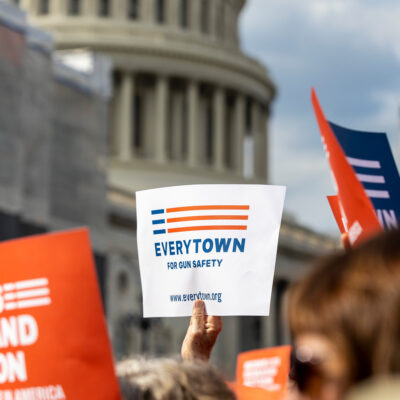Everytown for Gun Safety Support Fund Releases New Data Showing at Least 3,900 Petitions for Extreme Risk Protection Orders Have Been Filed Since January of 2018
9.12.2019
As Congress Weighs Extreme Risk Legislation, New Report Offers Most Comprehensive Look Yet at Policy’s State-Level Usage and Impact
Extreme Risk Laws Have Been Used to Avert Potential Tragedies including School Shootings, Workplace Attacks and Gun Suicides
NEW YORK — Everytown for Gun Safety Support Fund has released new data showing for the first time how many Extreme Risk order petitions have been filed in 10 states that have had Red Flag laws, also known as Extreme Risk laws, for long enough to collect meaningful data. The report, which comes as Congress considers federal Red Flag legislation, offers the most comprehensive look to date at how these laws can save lives. It examines the use and impact of these state laws, including the number of petitions filed by year and state and the proportion of counties within each state where petitions are being filed.
The report found that since January 2018, at least 3,900 Extreme Risk Protection Order petitions have been filed, including over 1,600 petitions filed so far in 2019. These laws are being used all across the states where they are present; extreme risk protection order petitions have been filed in nearly three-quarters of all counties.
“Across the country, people recognize that when someone is in crisis, firearm access can be deadly,” said Sarah Burd-Sharps, Research Director for Everytown for Gun Safety Support Fund. “Where lawmakers have empowered people to ask a court for an Extreme Risk Protection Order, people are taking action and saving lives. Family members and law enforcement are using these laws to temporarily keep guns out of the hands of people who pose extreme risks, and that’s buying time for people in crisis to get help when it matters most.”
The report includes:
- Case studies illustrating the value of Extreme Risk laws for public safety, including averting potential tragedies in schools, workplaces and in the home. For example:
-
In Maryland, a 2018 Extreme Risk law has been invoked in at least four cases involving “significant threats” against schools, according to the leaders of the Maryland Sheriffs’ Association.
The California Department of Justice was warned about a 21-year-old man who, after he was terminated, threatened to shoot coworkers. It was discovered that he recently purchased a shotgun, but due to California’s 10-day waiting period, the sale had not yet been completed. A temporary order was granted which ultimately blocked the sale and police found 400 rounds of shotgun ammunition in his home. The man contested the order, but a judge determined a final one-year order should be issued.
In Escambia County, Florida, a high school student was stalking his ex-girlfriend after she broke up with him. At one point he attempted to punch a boy who was with her. The student also threatened to post private photos of the girl on social media, said he would kill himself if she didn’t get back together with him, and posted photos of an AR-15 online. Two resource officers submitted affidavits for a petition against him and all the firearms were removed from his home.
- Evidence showing that Extreme Risk laws can reduce rates of firearm suicide
- An in-depth explanation of the robust due-process protections built into Extreme Risk laws
Extreme Risk Protection Order legislation, also known as Red Flag laws, gained traction in the wake of the Parkland shooting in 2018, when 14 students and three staff members were shot and killed. Just five states had enacted these laws at the time of the Parkland shooting; today, 17 states and the District of Columbia have enacted them.




